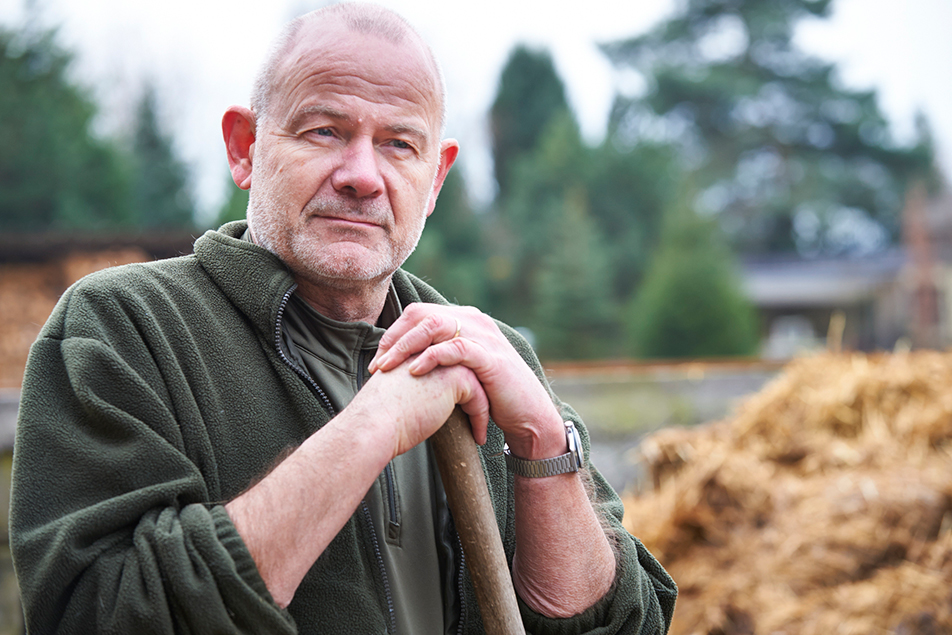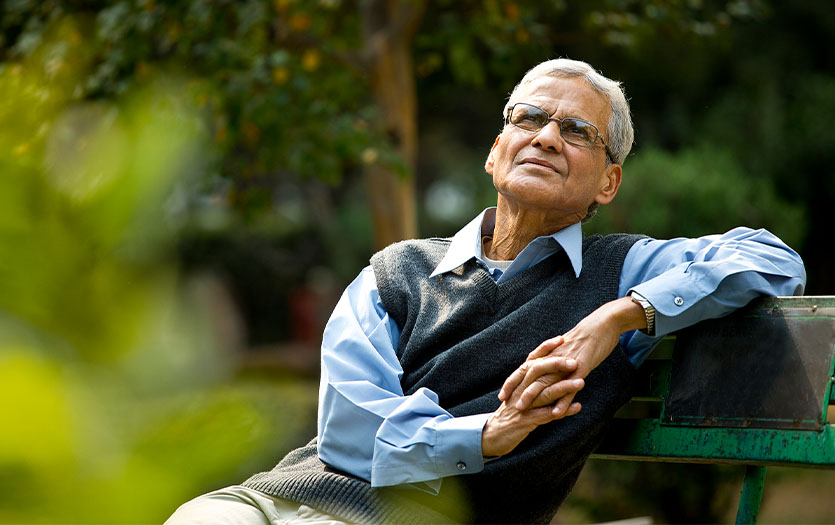
September is National Suicide Prevention Awareness Month, and it’s crucial that we all recognize the importance of discussing this sometimes-difficult topic. Depression is the underlying factor in suicide, and the more people who are aware of the signs and symptoms – and when a person might be at greatest risk for suicide – the better. Michelle Starnes, MSW, LCSW, works with older adults in her role as manager of the LifeBridge Senior Program at Parkview Wabash Hospital. She shares some eye-opening information about suicide risk.
Many people tend to think of suicide as a “young person” or “middle-aged adult” issue, so it might surprise you to learn that suicide rates in America are highest among older adults, especially in men over 85. And for seniors who live in rural communities, the risk is greatly increased.
According to the Centers for Disease Control and Prevention (CDC), male farmers and ranchers have a suicide rate six times the national average. This is due to a greater risk of social isolation and the lack of resources for mental health support in rural areas. Male farmers are also at higher risk due to:
- Socialization as men not to ask for help or seek healthcare
- Substance abuse
- Declining health and/or ability to do the physical labor
- Uncontrollable stressors including weather-related crop loss, price fluctuations and changing regulations
- Financial pressure not to lose the family farm
- Emotional stress as the provider for the family
- Lack of close confidants
- Stress-driven onset of depressive disorder
- Access to firearms
In older adulthood, grief may accompany the changes and challenges of aging, but clinical depression is not normal, and it can lead to suicidal thinking. Symptoms of clinical depression in older adults often go unnoticed by family and friends, or can be minimized as simply issues related to aging. The older adult may have difficulties identifying their own depression and may downplay symptoms they are experiencing, which can be different from those younger people experience. These symptoms may include:
- Sleep issues (sleeping more or less than usual, or difficulties falling asleep or staying asleep)
- Loss or decrease of appetite
- Worry over the future/fear of death
- Increased substance use
- Physical illness, including digestive issues, frequent headaches, aches and pains
- Increased trips to the emergency room or doctor’s office for minor issues
- Feeling like a burden to family or friends
- Agitation, irritability
- Loss of interest in previously enjoyed activities
- Social isolation
- Memory loss or difficulties with concentration
- Feelings of helplessness, hopelessness or worthlessness
When a depressed older adult begins to consider suicide (called suicidal ideation), they tend to give verbal and behavioral clues to their state of mind. They may make indirect statements to family or friends about feeling like “a burden” or that they wish they were dead. They may give directions for when they are no longer around, such as, “You’ll need to look after your mother after I’m gone,” or “When I’m gone, I want you to have my tractor.” It can be tempting to view such statements as a form of attention-seeking, but they should not be ignored or downplayed; the person should be asked in a non-confrontational way if they are thinking about suicide.
Behavioral clues about suicidal ideation can include giving away prized possessions, stockpiling guns or medications, putting personal affairs in order out of the blue, or a significant change in mood, such as appearing happy after a period of depression.
Older adults most at risk for suicide are the least likely to ask for help. It is crucial for family and friends of seniors, especially of men who farm, to be able to recognize the signs of depression and suicidal ideation. The more signs that are present, the greater a person’s risk for acting on suicidal thinking.
Intervention saves a life
Bob was in that situation when he came to see me at the Parkview LifeBridge Senior Program in Wabash. A 66-year-old respected business owner and farmer, he was overwhelmed by severe depression, anxiety, PTSD (Post-Traumatic Stress Disorder), nightmares, paranoia and psychosis. He was having suicidal thoughts and had planned out how he would end his life if therapy didn’t help him. Bob had never seen a therapist before and was not comfortable opening up to others, not even his wife, about his feelings. He was at serious risk of becoming a statistic, and I could tell he needed immediate intervention.
Bob found healing through Rapid Resolution Therapy, also known as RRT. This innovative, holistic short-term therapy takes only one to two sessions to work with both the conscious and subconscious parts of the mind and provide a healing, clearing and resolution of issues such as trauma, PTSD, depression, anxiety, panic, phobias, grief and substance cravings.
For Bob, the experience was life-changing, as he describes: “I was directed to LifeBridge at Parkview Wabash by my doctor due to severe major depression. I was having thoughts of suicide and getting worse by the day. My therapist, Michelle, dug deep into my problem and, realizing I needed help quickly, she recommended RRT to dislodge my PTSD and put it into the back of my mind for good. After only one RRT treatment, I was completely rid of my PTSD and can now talk about it without emotion. Michelle and RRT saved my life that day. I continue to see her for therapy and joined a group that helps keep me grounded and believing there is hope and life after PTSD. I highly recommend that anyone with PTSD or trauma that is affecting their life reach out to LifeBridge and get the help needed. The help will be relevant and rewarding for you.”
Take positive action
How can we protect older adults from heading toward a crisis like the one that Bob experienced?
Educating family, friends and other support people about signs and symptoms of suicide risk. The more people who can recognize the signs and act to encourage an at-risk adult to seek help, the better.
Fostering social connectedness. Check in with the person regularly to show you care about them. Don’t let them self-isolate. Introduce them into social groups with activities that provide stimulation. A feeling of belonging and shared experience goes a long way toward building a sense of purpose in life. Encourage them to get involved with a senior center. Most rural communities have senior centers where older adults can connect with others through exercise, arts and crafts, and meals, in addition to educational presentations and social events. Some centers also partner with mental health clinicians to provide added support while attendees are at the center. Senior centers may be helpful in connecting farmers with each other, too, since there is a lack of support groups or programs that specialize in the issues related to farming.
Remove access to guns and other weapons. Men usually choose weapons to follow through on thoughts of suicide, so having a trusted friend hold guns for safekeeping, or placing them in a lock box with the key kept off site by someone responsible, is highly recommended.
Encourage the at-risk adult to seek treatment for mental health issues. It is so important that the person reach out for help with depression, anxiety and grief. The idea of asking for help can be difficult for older adults, who grew up in an era in which personal problems were not discussed and everyone just soldiered on as best they could. For men, seeking help can be especially tough if they are reluctant to open up to a female therapist, and few therapists are specifically familiar with issues experienced by farmers. But as Bob found out, getting help can lift the burden and make a huge difference.
Rapid Resolution Therapy, the therapy that was so effective for Bob, is one of half a dozen treatment types that can alleviate depression, trauma, anxiety and grief in older adults. If you or a loved one is experiencing depression or considering suicide as an option, please reach out for help! You can:
- Visit the Park Center Walk-In Clinic at 2710 Lake Ave., Fort Wayne, 260-471-9440
- Call the Parkview Behavioral Health HelpLine at 260-471-9440 or 800-284-8439
- Call the Suicide Prevention Lifeline at 988
- Contact the Parkview LifeBridge Senior Program in Wabash at 260-569-2111 or in LaGrange at 260-463-9270



